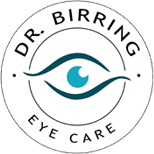OHIP Eye Examination Coverage
Proactive care through regular eye exams plays an essential role in detecting and addressing potential eye conditions early on. This not only helps with prompt treatments, it can mitigate the risk of further damage. For both children and adults, routine eye examinations are key to maintaining a good quality of life.
That’s why the Ontario Health Insurance Plan (OHIP) covers essential eye exams for children, seniors, and those with specific medical conditions. Last year, OHIP changed its rules for coverage, so stay in the know! Understanding what OHIP covers can help you safeguard your family’s vision.
How Often Do I Need an Eye Exam?
Whether for work or leisure, our eyes endure daily strain and we must take care of them. One of the most effective ways to maintain good eye health is through regular eye exams.
They act as the first line of defence, spotting the early onset of eye-related conditions like glaucoma or macular degeneration, which can gradually impair sight without warning. Generally, The sooner a problem is detected, the better the chances of successful treatment.
Of course, eye exams also simply help us see clearly! Our vision changes over time and you may not even realize there’s a problem until you can’t read the street signs anymore. Meanwhile, children’s eyes are constantly on the move. They use their vision to learn and grow. It’s tough to succeed in school if you can’t see the board, after all.
That’s why optometrists recommend different eye exam frequencies based on your age. Here’s a good general schedule for your family:
- 6–9 months: Infants should have their first eye exam
- 2–5 years: Children should have at least 1 more eye exam before school
- 6–19 years: 1 exam annually
- 20–64 years: 1 exam at least every 2 years
- 65+: 1 exam annually
It’s worth stressing this is a general schedule and your optometrist may recommend visiting more frequently if you have an ongoing vision problem.
What Does OHIP Cover?
The Ontario Government has recently focused on increasing access to services for people with medical conditions and vulnerable seniors. If you’re already familiar with how OHIP covers children’s eye care, you’ll be happy to know it hasn’t changed. But, if you’re unsure, take a moment to explore your coverage. You may be surprised by what you find.
OHIP Coverage for Children & Youth
Children under 19 should get an eye exam every 12 months, which is exactly what OHIP covers! This includes 1 major eye exam for vision and general health, as well as minor appointments along the way.
A minor appointment can include advice for an eye condition uncovered during the previous eye exam, such as help with nearsightedness.
OHIP Coverage for Adults with Eligible Medical Conditions
The umbrella of OHIP extends to adults aged 20—64 with eligible medical conditions that directly impact eye health. These eligible conditions include:
- Diabetes
- Glaucoma
- Cataracts that impact vision (This can include cataract surgery)
- Retinal disease
- Corneal disease
- Optic pathway disease
- Acute or chronic uveitis
- Acquired cranial nerve palsy resulting in strabismus
- Ocular drug toxicity screening for patients taking hydroxychloroquine, chloroquine, ethambutol, or tamoxifen
Coverage may depend on the severity of your condition, so discuss your concerns with your optometrist or family doctor.
If you’re eligible for coverage, you can receive 1 major eye exam every 12 months and 2 additional follow-up appointments.
OHIP Coverage for Seniors 65+
One of the changes for OHIP involves focusing on seniors with medical conditions affecting their eyes. If you’re over 65 and have an eye condition such as macular degeneration, glaucoma, or diabetes, you can receive 1 exam every 12 months with 2 minor follow-up assessments.
If you’re over 65 and don’t have an eligible medical condition, OHIP will cover 1 major eye exam every 18 months, with the same 2 minor follow-up assessments.
Does OHIP Cover Glasses?
OHIP doesn’t typically cover the cost of prescription eyeglasses or reading glasses. Coverage for glasses is usually provided through private insurance plans or out-of-pocket expenses. It’s always a good idea to check with your specific insurance provider for any updates or changes to your coverage.
Who is Eligible for OHIP?
To receive your OHIP health card, you need to meet a few requirements.
The minimum requirements for OHIP are:
- Being physically in Ontario for at least 153 days during any 12-month period
- Being physically in the province for a minimum of 153 days out of the first 183 days after you start living in Ontario
- Having Ontario as your primary place of residence
Additionally, you have to meet at least 1 of these additional requirements. In many cases, you’re already eligible, but always double-check. You could be:
- A Canadian citizen
- An Indigenous person registered under the federal Indian Act
- A permanent resident
- Applying for permanent residency
- On a valid work permit and working full-time for at least 6 months
- A refugee or other protected person
- Holding a Temporary Resident Permit
- A clergy member minister for at least 6 months

Book Your Eye Exam
We’ve stressed the importance of eye exams, but that only helps if you know they’re within reach. Take the time to review your OHIP coverage. And if you’re covered, use your benefits! Of course, OHIP isn’t the only game in town, and Birring Eyecare can work with all Canadian insurance providers to help you get the care you deserve.
Be proactive and book your eye exam today.



